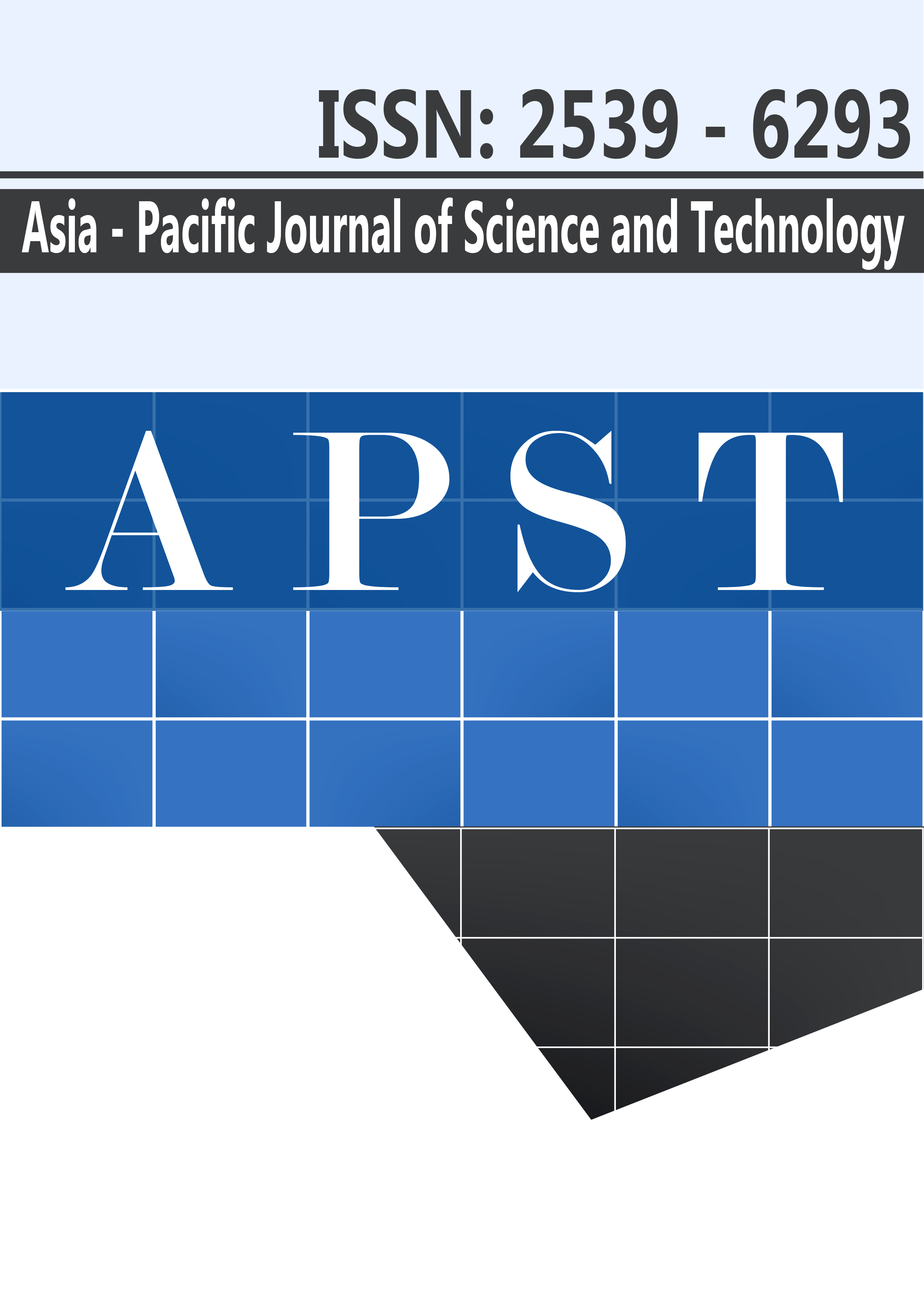Factors influencing public perception and impact distance of a municipal solid waste dumpsite in Thailand
Main Article Content
Abstract
In Thailand, the continued use of unsanitary disposal sites without sufficient environmental and public health protection has led to a growing negative public perception of local municipal solid waste facilities. While the development of a more environmentally-benign system is underway, it is essential to understand how to handle and prevent negative public perception from escalating into excessive public opposition. In this paper, in-depth interviews and questionnaire-based interviews are used to gather data from 468 respondents, at 28 survey locations, within a 5.7 km radius of the Praeksa Mai dumpsite. The concerns that drive negative public perceptions of the dumpsite, which can be classified into those related to health, environment, and property value of land, are revealed. Non-parametric statistical analysis techniques are used to identify the significant factors influencing the perception of residents living near the dumpsite, and to investigate the change in perception related to 6 impact categories across different distance intervals from the dumpsite. The results show that the odor is the most significant issue faced by the group of residents living within 1 km around the dumpsite. Overall, the impact distance is about 3.5 km away from the dumpsite. Beyond this distance, respondents feel that they are only slightly affected by the dumpsite. The approach used to investigate the impact distance and the change of public perception over distance is the main contribution of this paper.
Article Details
References
[2] Boadi K. O., Kuitunen M. Environmental and health impacts of household solid waste handling and disposal practices in third world cities: the case of the Accra Metropolitan Area, Ghana. Environ Health. 2005;68:32-36.
[3] Ojha C., Goyal M. K., Kumar S. Applying fuzzy logic and the point count system to select landfill sites. Environ Monit Assess. 2007;135:99–106.
[4] Ding Z., Zhu M., Wu Z., Fu Y., Liu X. Combining AHP-entropy approach with GIS for construction waste landfill selection - a case study of Shenzhen. Environ Res Public Health. 2018;15:2254.
[5] Cheng H., Hu Y. Municipal solid waste (MSW) as a renewable source of energy: current and future practices in China. Bioresour Technol. 2010;101:3816–3824.
[6] Wojnowski W., Badach J., Kolasi P., Namie J. A case study of odour nuisance evaluation in the context of integrated urban planning. Environ Manage. 2018;213:417–419.
[7] Aatamila M. et al. Odor annoyance near waste treatment centers: a population-based study in Finland. Air Waste Manag Assoc. 2010;60:412–418.
[8] Che Y., Yang K., Jin Y., Zhang W., Shang Z., Tai J. Residents’ concerns and attitudes toward a municipal solid waste landfill: Integrating a questionnaire survey and GIS techniques. Environ Monit Assess. 2013;185:10001–10013.
[9] Sakawi Z., Mastura S. a., Jaafar O., Mahmud M., Centre E. O. Community perception of odor pollution from the landfill. Geografia Online Malays J Soc Space. 2011;7:18–23.
[10] Naddeo V., Zarra T., Oliva G., Chiavola A., Vivarelli A. Environmental odour impact assessment of landfill expansion scenarios: Case study of Borgo Montello (Italy). Chem Eng Trans. 2016;54:73–78.
[11] Aatamila M. et al. Odour annoyance and physical symptoms among residents living near waste treatment centres. Environ Res. 2011;111:164–170.
[12] He G., Boas I. J. C., Mol A. P. J., Lu Y. What drives public acceptance of chemical industrial park policy and project in China?. Resour Conserv Recycl. 2018;138:1–12.
[13] Vrijheid M. Health effects of residence near hazardous waste landfill sites: a review of epidemiologic literature. Environ Health Perspect. 2000;108:101-112.
[14] Rahardyan B., Matsuto T., Kakuta Y., Tanaka N. Resident’s concerns and attitudes towards solid waste management facilities. Waste Manage. 2004;24:437–451.
[15] Feo G. De, Gisi S. De, Williams I. D. Public perception of odour and environmental pollution attributed to MSW treatment and disposal facilities : a case study. Waste Manage. 2013;33:974–987.
[16] Sankoh F. P., Yan X., Tran Q. Environmental and health impact of solid waste disposal in developing cities : a case study of granville brook dumpsite, Freetown, Sierra Leone. Environ Prot. 2013;4:665–670.
[17] Al-Khatib I. A., Ajlouny H., Al-Sari M. I., Kontogianni S. Residents’ concerns and attitudes toward solid waste management facilities in Palestine: a case study of Hebron district. Waste Manage Res. 2014;32:228–236.
[18] Babs-Shomoye F., Kabir R. Health effects of solid waste disposal at a dumpsite on the surrounding human settlements. Public Health in Dev Countries. 2016;2:268–275.
[19] Ren X., Che Y., Yang K., Tao Y. Risk perception and public acceptance toward a highly protested waste-to-energy facility. Waste Manage. 2016;48:528–539.
[20] Olapiriyakul S. Designing a sustainable municipal solid waste management system in Pathum Thani, Thailand. Int J Environ Tech Manag. 2017;20:1/2.


